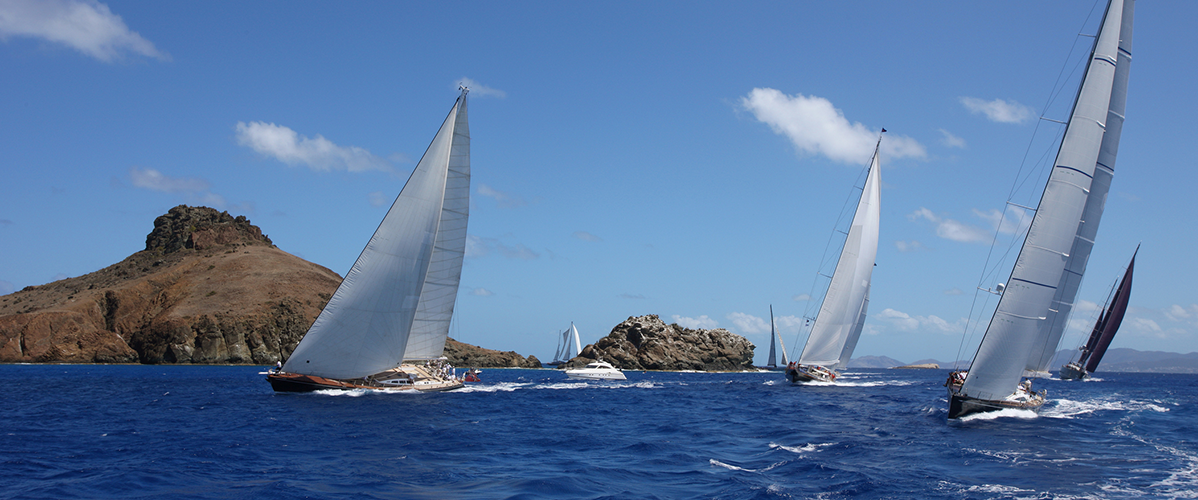“Boat design now favours closed cockpits from the inside of which skippers watch the sea and sails on a screen then make adjustments.”
On November 8th, 2020, 33 skippers set sail to tackle the “Everest of the seas”. This year again, the aim is clear: to break speed records. Armel Le Cléac’h, winner of the previous edition, made his round-the-world trip in 74 days. In 2020, the competitors hope to make it in less than 70 days. To achieve this the IMOCA 60s – 60-foot-long monohull sailing yachts – are brimming with technology. The 9th edition of the Vendée Globe marks the advent of instrumentation and artificial intelligence (AI).
Sensors and “smart” pilots to enhance performance
Collection and processing of the data generated onboard the IMOCAs have taken a giant leap forward in the Vendée Globe 2020.
Dozens of sensors are installed in strategic places such as the rudder, the hull, the sails, or the foils (see insert). They collect data relating to the boat’s movement, to strains exerted on various elements, to the wind, etc. and feed the onboard computer enabling the skipper to make the right adjustments so as to reach impressive speeds.
On board Hugo Boss, skippered by Alex Thomson, 350 sensors, supported by around ten thermal and video cameras, collect a variety of data that is processed by data analysis and machine learning algorithms. The skipper himself wears a whole set of sensors to monitor his physical and mental state. Unfortunately, Alex Thomson was forced to abandon the race on 28th November following a collision with a floating object.
The sensors also feed the autopilot, the sophistication of which has contributed to one of the greatest performance gains ever in the offshore racing world.
Autopilots are based on the servomechanism principle: they receive a set value that they must maintain. Let’s take course for example, the system will calculate the difference between actual course and desired course then take action on the rudder in order to stay on course.
To do this, the pilot measures the course with a compass and, for the most advanced systems, with the help of sensors. The data is processed by the control unit, the system’s brain, which performs the calculations and sends the results to the actuator, which is responsible for activating the drive unit. The pilot is also equipped with a human-machine interface.
Integrating more and more technology bricks, autopilots have become “smarter”. Not content with simply staying on course, today’s more responsive and precise pilots adapt to the boat’s movements better than a human can.
An anti-collision system based on AI to reinforce safety
Difficult to detect, unidentified floating objects (UFOs) are a great danger to the Vendée Globe yachts. For the skippers, collision with a UFO often means quitting the race. This year, 18 of them are equipped with a new anti-collision system based on computer vision.
Developed by BSB Marine with the support of big names in offshore racing, such as Jean Le Cam and Armel Le Cleac’h, OSCAR is made up of a vision unit comprising two thermal cameras and a colour camera that scan the water’s surface by day and by night. Software analyses the video streams in real time.
Trained – thanks to a deep learning process – from a huge database of floating objects, OSCAR is capable of recognising the specific visual signature of floating object categories in a given situation. It displays the position of the floating objects detected on a map and immediately alerts the skipper of a potential danger.
What is the impact of these technologies on the competition?
An article published on the Vendée Globe website, backed up with quotes from skippers, describes how the new generation of autopilots has changed the way in which IMOCA’s are designed and managed.
The introduction of foils and the autopilots’ sophistication have led to a great increase in boat speeds (and in speed differences) and therefore in apparent wind, to the point that the sailors, by their own admission, are sometimes no longer fast enough at trimming the sails.
It has therefore been necessary to modify sail design for them to accommodate speed variations without constantly needing to be adjusted. Other elements, such as the hull or the appendages (underwater elements that control or stabilise the boat) have also been affected.
The boats may have become more difficult to manoeuvre but they have also become more dangerous. On the one hand they are subjected to ever more violent impacts, which makes for more perilous and trying living conditions, and on the other, sailors can no longer spend too much time outside where they run the risk of being hit by huge cascades of solid water.
The result: boat design now favours closed cockpits from the inside of which skippers watch the sea and sails on a screen then make adjustments safely.
These evolutions have increased the trend which has been ongoing for several years: sailors spend less and less time at the helm.
Their typical profile has also evolved as the instrumentation requires greater knowledge of electronics and computing. For example, François Gabart and Armel Le Cléac’h, the last two winners of the Vendée Globe, both have an engineering background.
Skipper experience, a cardinal virtue
This does not mean that the skippers can rely completely on technology. Firstly, because the Vendée Globe rules limit what it can and cannot do (sail trim, weather routing, etc.), and also because they are not immune to technical failure.
Damien Seguin (Groupe Apicil) and Louis Burton (Bureau Vallée II) were both forced to set the race aside and “get their hands dirty” because of an autopilot problem.
Alex Thomson’s IMOCA was one of the most “well-tooled” and was in fact equipped with the OSCAR system. A few days before quitting the race, the British skipper explained how during the Vendée Globe 2016 he lost use of his satellite antennas (enabling him to receive his weather files), which forced him to “navigate the old way”.
Ultimately, today’s skipper must have technical knowledge, but experience and intuition remain cardinal values.
The flying boats of the Vendée Globe
Foils first appeared at the Vendée Globe during the 2016 edition. A true breakthrough innovation, these “moustaches”, placed both port and starboard, generate hydrodynamic bearing capacity that can lift the yachts out of the water, making them “fly” and thus gain speed. In 2020, foils have been definitively taken on board by the skippers – with 19 boats out of 33 being fitted – and their size has been multiplied threefold.




